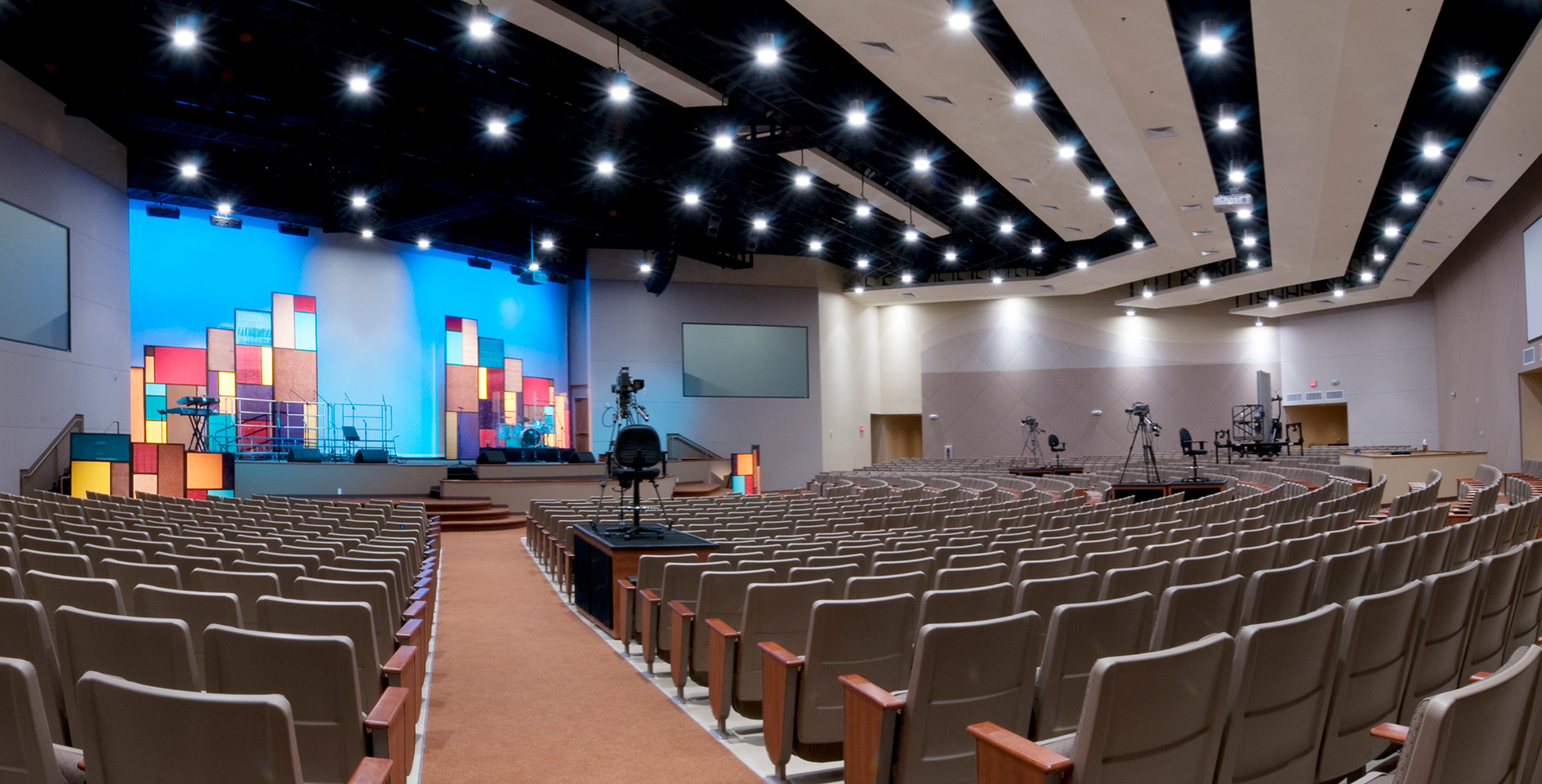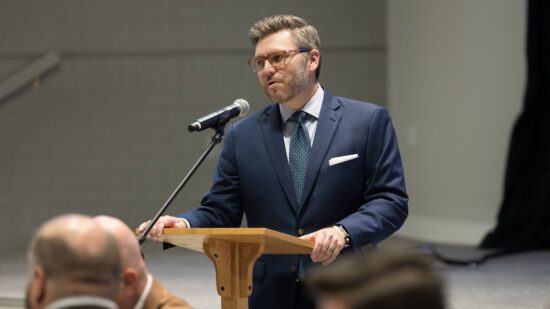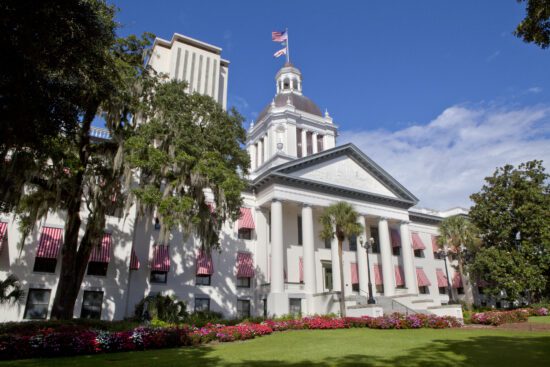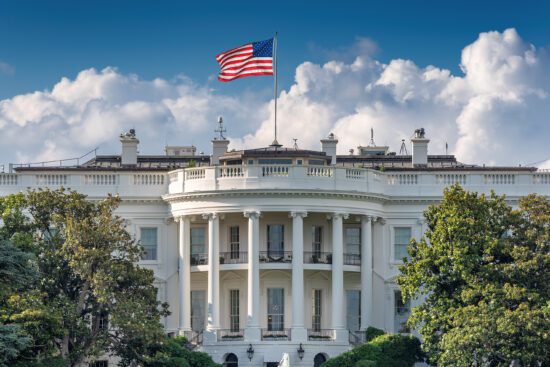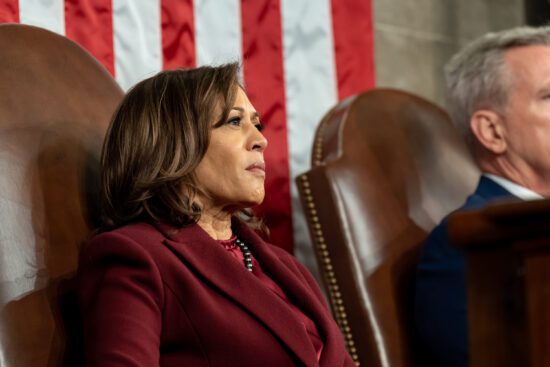Note: This article is intended as a starting point for your church as you consider the right course of action for your local congregation. Leaders will need to make wise decisions for their local church in line with local, state, and national guidelines, considering the needs and safety of their church members and community.
When should churches reopen their doors to allow in-person worship? This is a question that is on the minds of pastors and church leaders around the country. Bound up with this question are a whole host of others, too: What benchmarks will signify that it’s safe to gather again in person? When we do reopen, what precautions ought we to take?
Admittedly, there is no one-size-fits-all plan that will work for every church. Not only that, but we’re nowhere close to a “return to normal,” as many public health officials warn. Additionally, how and when churches reopen will vary from church to church based on size of congregation, location, local and state guidelines, the number of cases in their area, the demographics of their congregation, and the willingness of their members in returning to onsite gatherings. New information arrives each day, and with it the landscape seems to be changing constantly. But here are four things every church can do as they start to ask when the right time is to reopen their church.
What should churches do as they consider when to reopen?
A previous article laid out four primary suggestions churches should consider when determining how they should respond to the coronavirus. In many respects, the same four suggestions remain—they merely apply to a different question now. Here are those suggestions and how to apply that same principle now:
First, churches should identify reliable, local sources of information. It may be obvious to say we need expert, reliable information, but it’s more critical than ever that we identify relevant local information as well. Some communities are reeling with overcrowded hospitals and large numbers of cases while other communities have seen far fewer. Churches need to take these factors into consideration. Regardless, choices must be made based on objective data, not subjective impressions.
Second, churches should assess their practices. There are all sorts of things that we take for granted as a normal part of church life—ranging from handshakes and greeting times to passing the offering plate and singing—which take on new significance and risk in a world rightly concerned with contagions. Churches should think through every aspect of the churchgoer’s experience, asking where the risks are and how people can be protected.
Third, churches should overcommunicate their plans. Go far beyond what you think might be necessary to explain to people what measures have been put in place and how their safety has been prioritized. Clear, careful, and intentional communication in advance of what you are doing, and why, is necessary and helpful. Internally, make sure different ministries are not communicating conflicting things. If you are requiring certain practices at church gatherings, communicate what those are repeatedly and carefully. When plans are undetermined or subject to change, be transparent about when decisions will be made and what will guide that decision. It’s difficult to overdo this step.
Fourth, churches should encourage their people. Even if churches put together incredibly well-designed safety measures, even if the curve flattens dramatically, and even if local authorities give the all-clear, there are still people who, understandably, are going to be anxious and/or cautious about returning to church. In many cases, they may be right to feel this way. In every case, be quick to be understanding.
How are churches considering plans to reopen?
To get as practical as possible, we asked dozens of pastors around the country what criteria they were thinking through in order to make these determinations. Below, you’ll find synthesized responses from pastors and church leaders of all different sizes (from small churches to megachurches and everywhere in between) situated in widely different contexts (ranging from rural to urban to suburban areas).
- Timing: Some were planning to reopen immediately; others said they had no expectation they would be able to reopen until Labor Day at the earliest.
- Information: All were consulting CDC, state, and city guidelines. Some were looking at practices local schools and universities were implementing.
- Phases: Most were constructing flexible plans with different phases that would consider how many could safely gather in their meeting space practicing social distancing guidelines.
- General consensus: Every pastor interviewed expressed eagerness to return to in-person gatherings as soon as possible, but many pastors also admitted a fear of rushing back too soon and a determination to make sure they were protecting their people well.
What phased plans are churches considering?
Rather than a concrete timeline, many churches are developing plans in concert with their state and local government recommendations, as well as CDC large-gathering criteria. As different communities move into different phases, wherein larger numbers of people are allowed to meet together, the churches have a plan for each phase. While churches may not know when each phase will occur, they have a plan for how to proceed when the time comes based on the size, demographics, and the needs of their congregation. While churches had several different phases in their plans for reopening, in general, the following is how they planned to proceed:
- When gatherings of less than 10 are permitted most churches were not meeting in-person and had all their services or gatherings online.
- When gatherings of more than 10 are permitted several churches were hosting small watch parties gathering in homes to watch the Sunday service together. One church planned on doing this regionally, while having visitors to the church watch the service at the pastor’s home. Others planned to resume in-person small groups at this point with social distancing in place. For some churches, this meant their small groups would need to meet on campus rather than in a home to have more space to spread out.
- When gatherings of 50 or more are permitted some churches decided to resume at least one in-person service while livestreaming to the rest of the congregation. Other churches planned on hosting several services to accommodate more people taking the necessary cleaning and distancing precautions. Still other churches thought it was better for their church to wait to resume Sunday services until more of their people could join. Some churches considered drive-in or outdoor services the best option at this point. Plans varied in including limited attendance with tickets or sign-ups, recommending or requiring masks, no food or beverages offered, and communicating to those who were most at risk that it was okay to stay home while offering them ways to connect to the church community from home.
- When gatherings of 100 or more are permitted some churches said they plan to gather but considered several different options for the main service, while continuing to livestream the main service until their congregation was fully back. Several churches considered creative ways to continue to include the vulnerable and those who would be hesitant to initially return.
Importantly, just because churches are free to host services, several pastors indicated that this did not mean they would rush back immediately.
What about children’s ministry?
Most churches did not plan on resuming children’s ministry until the latter stages of their plans. One shared that they won’t resume children or student ministries until phase 3 of the federal guidelines is implemented. Several churches were considering additional resources for families to aid them in discipling their kids since there was no kid’s program offered. For more on this issue, see “12 Things to Consider When Reopening Your Children’s Ministry.”
What other areas are churches considering?
Teams/Committees
Several churches formed a team or committee to meet for the length of the pandemic and to plan for reopening because they recognized they had members in their church who have expertise to contribute to the discussion. These teams varied in size and contributors, but included custodians, medical professionals, health department officials, business professionals, educators, pastors, and church or ministry leaders. These teams were an integral part of decision making and communicating policies and procedures. One pastor explained that this team of knowledgeable individuals not only helped them develop a wise plan for reopening, but their work allowed the pastors and ministry leaders to focus on caring for people in the crisis instead of on the logistics of reopening.
Beyond your church committee or team, consider the benefits of networking with other churches. Several churches were keeping apprised of what other churches in their area or of a similar size were doing. A number of the Southern Baptist state conventions have been diligently working to provide their churches with resources specific to their state. These are helpful resources to be aware of and familiarize yourself with.
Facilities
After several weeks of closure and when planning for reopening, consider what needs to be done to prepare your facilities.
- How will you practice social distancing when necessary before, during, or after the service? Consider especially seating and greeting time. Will you seat people in every other pew? Will they be grouped in a certain way? Will someone direct people to seats? Will families sit together spaced out from other groups? How will you communicate this to the congregation?
- Do items need to be removed that might attract touches and germs (hymnals, pew Bibles, etc.)?
- What can be adjusted for extra precaution (doors open, welcoming procedure altered, etc.)?
- What supplies are needed for preparing, welcoming your congregation back, or following local guidelines (disinfectant, wipes, hand sanitizer, soap, globes, masks, thermometers)?
- What areas will be utilized and which will be closed for the time being (play areas, drinking fountains, etc.)? How will you make that clear?
- What areas will need to be regularly disinfected once open (doors, counters, elevators, stair handrails, bathrooms)? Who will take care of that and when?
- How will entry and exit from the building and sanctuary/worship hall be managed? Will guests enter one way and exit another?
- Will you need to consider multiple services, multiple venues, or alternate venues to abide by guidelines? See “Sunday services” below for more details.
- Will you need to consider alternative venues for a time if your current venue is not able to accommodate services?
Volunteers
As you reenter, volunteers will likely be more essential and more scarce. You will likely need more help with the possible increased number of services, reduced class sizes, or needs unique to this season, like ongoing sanitation. Some of your usual volunteers may be unable to help due to sickness, health concerns, their comfort level in returning to on-campus gatherings, or temporarily relocating to another area to live with family during social isolation. You will likely need to recruit new volunteers and train all of your volunteers, so they are familiar with your COVID-19 protocols. The more prepared you and your volunteers are, the more confident people will be to return to in-person services. So before you return, a virtual training time for your volunteers can be helpful. When setting up virtual training, consider work and family schedules for time offerings. It may be helpful to record the training for those who are unable to attend at the set times.
Sunday services
Depending on the guidelines given nationally and locally and your church size, several changes to Sunday services may be necessary.
Depending on church size and social-distancing guidelines in place, some churches may choose to provide multiple services to accommodate their church members. Some churches shared that they planned to have services in different parts of the building at different times (e.g., the fellowship hall at 8:00 a.m., the sanctuary at 9:30, and the fellowship hall again at 11:00), thus allowing one room to be sanitized while the other is being used.
Regardless, if you decide to offer multiple services to allow for social distancing, you will need to plan for time to clean in between. You may need to change the time or the length of your services to accommodate for this. Some churches are considering small changes such as moving their announcements online to provide more time.
Also, as many churches will be unable to offer children’s ministries when they initially gather, you will want to consider what changes need to be made in the service to accommodate having younger children present. Several churches are considering what creative and additional resources they can continue to provide parents in this season to help them disciple their children.
If you do not normally offer your services online but have during this season, you may want to consider continuing to offer your service online for those who are more vulnerable or who will not immediately return to in-person gatherings.
Other considerations for your in-person service are:
- How will those on stage practice social distancing?
- If you will offer baptisms, what precautions need to be in place?
- Will you administer the Lord’s Supper? If so, how will you do that safely?
- When it is safe for the choir or orchestra to return? How much space is needed to make sure congregational singing is safe? What guidelines will need to be in place?
- How will you safely collect an offering?
- What changes need to be made to your prayer ministry to allow for social distancing?
- How will your greeting time or dismissal need to change?
Other gatherings
In addition to deciding what the church will do for Sunday gatherings, leaders will also need to determine how the church will return to their other gatherings. Some churches will resume in-person small groups before the Sunday service, while others will continue virtual small groups for a season while returning to a Sunday service on campus with social distancing practices.
One pastor said, “We’re going to experiment on the margins, not in the main.” What he meant is that he felt like his church was responding well to Sunday mornings online, so he wanted to avoid the whiplash of resuming Sunday morning services, only to have to take it away again and go back online if things in the area worsened. He also said that when they do decide to reopen they would start with something smaller than the Sunday morning gathering, say, a Wednesday evening prayer service with social distancing. Onsite and offsite church gatherings may or may not follow the same guidelines. Each church will have to determine those guidelines and communicate clearly.
Additionally, the use of the church building by outside groups will need to be considered. Some churches because of time constraints and facilities limitations will likely need to suspend outside usage. Others may need to consider what policies they implement for outside events such as food and beverage usage, social-distancing policy, or a cleaning agreement.
Additional considerations
Because there have been so many unknowns in this pandemic, additional considerations may need to be built into a plan for reopening.
- What will your response be if there’s a recurrence in the area?
- What will signal that it is okay to reopen children and student ministries and what is your plan for communicating clearly about their safety with parents? Will you need to change our check-in and check-out policy? Will you need to implement modified classroom procedures and maximum classroom numbers? What will your plan be for overflow?
- What will you do in the present to care for children and families until children’s and student ministries can reopen?
- What will be your decision points for summer events like VBS or summer camp?
- How will you care for those who aren’t ready to return? What online or alternate options can the church offer?
- With so many people experiencing job loss or financial constraints in this season, how will your church serve those in need? Do you have a system for knowing needs and opportunities? Will you collect a benevolence fund? How will you know who is in need? Are there resources or opportunities in your church that can be matched to meet the needs?
- When should the church office reopen? When should in-person spiritual/pastoral care resume? How can you provide necessary support to church members in the meantime?
- When should in-person committee meetings resume?
- If you have a preschool or school, when should that reopen and what guidelines should be in place?
- What other ministries may need to reopen but with adapted guidelines?
- How can we consider and serve vulnerable populations?
- Are there specific populations we need to care for in specific ways? How can you serve families in crisis or medical providers? How can you encourage people to reach out to their neighbors in appropriate ways?
- What creative ways can you minister in areas where the normal procedure won’t work?
Additional Resources
- Carter, Joe, CDC Document Outlines Guidance for Reopening of Churches.
- Garrison, Joe, Why Clarity Matters When Reopening Your Church.
- Kennedy, Jared, Phase-by-Phase Recommendations for Reopening Children’s Ministry.
- Stetzer, Ed, and Josh Laxton “What Relaunching the Church Might Look Like Over the Next 3–12 Months.”
- The Malphurs Groups, The Ready to Reopen Church Checklist.
- Tarkington, David, Our Church Restart Requires More Planning Than the Stopping.
- Many Baptist state conventions have also created resources or been in active discussion with churches when it comes to thinking through factors to think through when they consider reopening, often with area-specific insight. For more, see below:
- Alabama Baptist State Board of Missions
- Alaska Baptist Convention
- Arizona Southern Baptist Convention
- Arkansas Baptist State Convention
- Baptist Convention of Iowa
- Baptist Convention of Maryland/Delaware
- Baptist Convention of New England
- Baptist Convention of New Mexico
- Baptist Convention of New York
- Baptist General Association of Virginia
- Baptist General Convention of Oklahoma
- Baptist General Convention of Texas
- Baptist Resource Network of Pennsylvania and South Jersey
- Baptist State Convention of Michigan
- Baptist State Convention of North Carolina
- California Southern Baptist Convention
- Colorado Baptists General Convention
- Dakota Baptist Convention
- Florida Baptist Convention
- Georgia Baptist Mission Board
- Hawaii Pacific Baptist Convention
- Illinois Baptist State Association
- Kansas-Nebraska Convention of Southern Baptists
- Kentucky Baptist Convention
- Louisiana Baptist Convention
- Minnesota-Wisconsin Baptist Convention
- Mississippi Baptist Convention Board
- Missouri Baptist Convention
- Montana Southern Baptist Convention
- Nevada Baptist Convention
- Northwest Baptist Convention
- South Carolina Baptist Convention
- Southern Baptist Convention of Virginia
- State Convention of Baptists in Indiana
- State Convention of Baptists in Ohio
- Tennessee Baptist Mission Board
- The Southern Baptists of Texas Convention
- The West Virginia Convention of Southern Baptists
- Utah/Idaho Southern Baptist Convention
- Wyoming Southern Baptist Missions Network



